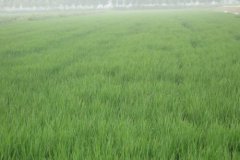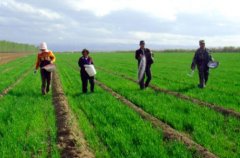Fusarium wilt control: how to do cowpea Fusarium wilt? How is cowpea treated with Fusarium wilt?
Cowpea is a common dish on the market, and many people like to eat it. How to treat cowpea with wilt disease? Let's take a look.
Cowpea (commonly known as "kidney bean" in Taiwanese) grows from April to September. It is an important summer vegetable in Taiwan."Sanchiqingpi" is the most common cowpea variety, mainly grown in Kaohsiung and Pingtung. However, cowpea has been seriously affected by wilt disease in the last ten years, and a large number of cowpeas have died six or seven weeks after planting, just at flowering period. The control effect on cultivated land is limited, and there is no cure for it. It is regarded as "bean cancer" by farmers, causing many farmers to have headaches and reduce their willingness to plant.

Chu Ya-ling, an assistant researcher at the Kaohsiung Agricultural Reform Station, says that long-term cultivation of soil will accumulate fungi, and the pathogens that inhabit the soil will invade the cowpea roots, destroy the vascular bundles that carry water, and spread upward. In the early stages of the disease, the leaves will curl and wither, and in the later stages, the whole plant will die. Cowpea farmers lack effective field control methods, wilt damage is too serious, many farmers will still use drugs, but are ineffective drugs.
In 2016, Kaohsiung Agricultural Reform Station officially launched the "Wilt Resistant Grafting Seedling Technology" and transferred it to the Grape Field Seedling Farm. Zhu Yaling mentioned that the original cost of cowpea was about 0.4 yuan. After technology transfer, the price of cowpea seedling was 6 yuan, which was increased by 15 times. She worried that farmers could not accept it. However, many people asked about grafted seedlings in the past two years, and the seedling operators even exceeded the demand. The owner of the organic farm said that although good planting management, but only cowpea wilt disease can not be done, tried to use cowpea wilt resistant grafted seedlings, found that cowpea disease resistance significantly improved, no longer dead.
Cowpea, you know how to treat it now.
- Prev

Is the output of cheese agriculture good? Taiwan's cheese agriculture will be opened to foreign migrant workers as soon as early January.
What about the work of cheese farming? Chen Jizhong, chairman of the Council of Agriculture, said that cheese farming is a 3D industry, and people are less willing to engage in it, so they are open to foreign migrant workers. Let's take a look. Cheese farming has long working hours, heavy workload, dirty environment and lack of work.
- Next

What are the field management measures? Is plastic sheeting useful for field management?
Do you know what the common black plastic in the field is for? Why do farmers lay a layer of black plastic? What's good about that, you know? Let's take a look. Silver black plastic cloth can often be seen in the fields, and the fields are completely covered one by one to prevent
Related
- A one-day flower show brings 130 million yuan in orders! Nanhai, this Phalaenopsis exhibition is amazing
- What do the flower language and meaning of Lutheran tree mean? Precautions for planting Lutheran tree
- Encounter Chaoshan Kongfu tea, not without this cup of Phoenix single clump
- The durian market in Vietnam and Thailand is flooded. The price of imported durian has plummeted by 30-40% in a month.
- Shanghai solved the problem of local vegetable supply by planting 80,000 mu of green leafy vegetables.
- Wageningen University has become the best agricultural university in the world for the seventh time in a row.
- The strongest export season of South African grapes is full of challenges, with exports to Russia falling sharply by 21%.
- Sri Lanka is on the verge of bankruptcy, "Tea for debt" Organic Agriculture Revolution aggravates the Food crisis?
- Turning waste into earthworm manure and worm manure into organic fertilizer-A new choice for auxiliary farming
- Organic rice growers shoulder the responsibility of nurturing agricultural talents! Yinchuan Sustainable Farm with Organic Life Camp

